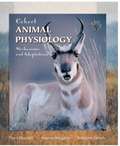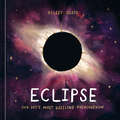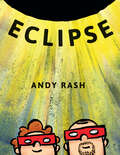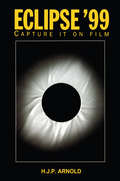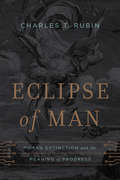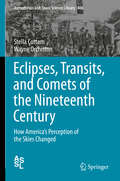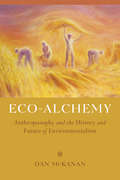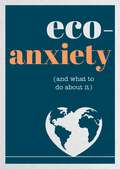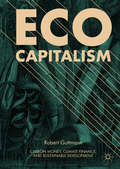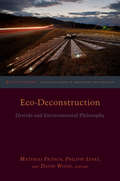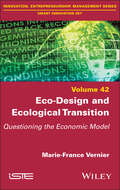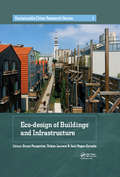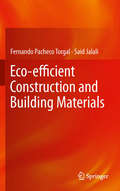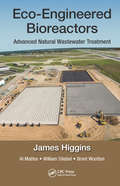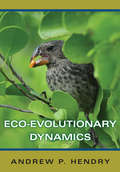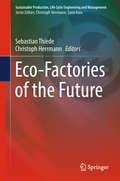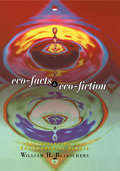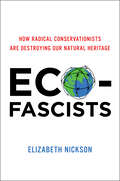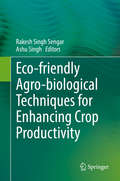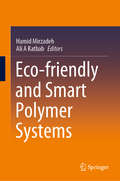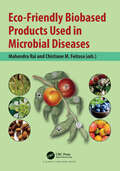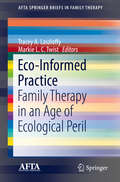- Table View
- List View
Eckert Animal Physiology
by David Randall Warren Burggren Kathleen FrenchThis classic animal physiology text focuses on comparative examples that illustrate the general principles of physiology at all levels of organization--from molecular mechanisms to regulated physiological systems to whole organisms in their environment. <P><P><i>Advisory: Bookshare has learned that this book offers only partial accessibility. We have kept it in the collection because it is useful for some of our members. Benetech is actively working on projects to improve accessibility issues such as these.</i>
Eclipse: Our Sky's Most Dazzling Phenomenon
by Kelsey OseidDiscover the ancient myths and fascinating science of the world&’s most striking celestial phenomena—eclipses—in this educational, beautifully illustrated guide by the acclaimed author of What We See in the Stars.Awe-inspiring, majestic, and always a little otherworldly, eclipses have captivated our imaginations for thousands of years. Whether plunged into darkness as the sun disappears in the middle of the day or enchanted by the moon&’s blood red glow as a vast shadow creeps across its surface, our ancestors both feared and revered eclipses, seeking to understand these striking celestial events through both storytelling and science.In Eclipse, celebrated artist and author Kelsey Oseid explores the science and mystique of lunar and solar eclipses, from the myths of our ancestors to today. Did you know that in Chinese legends, solar eclipses were caused by dragons eating the sun? Or that the Norse people believed that a sky wolf chased away the moon? Oseid presents these rich historical stories alongside informative, accessible science to enrich your understanding: a solar eclipse only occurs during a new moon; a selenelion is when you can see the lunar eclipse in front of you and the sunset behind you; and the Mars Rovers have even taken photographs of eclipses from Mars.Filled with captivating information and vivid, colorful illustrations, Eclipse will delight and inspire astronomy lovers of all ages.
Eclipse
by Andy RashA boy and his dad experience a total solar eclipse in this heartwarming picture book by author and illustrator Andy Rash.Shimmering rays shine around the moon. I try not to blink.We are in the perfect place at the perfect time.After hearing about the total solar eclipse happening in two months, a boy makes a plan with his father to go see it. They drive to the perfect campsite, not wanting to miss the couple of minutes when the sun will be completely hidden by the moon. When the moment happens, being together makes it even more special.Based on a trip that author-illustrator Andy Rash took with his son to see the eclipse in August 2017, Eclipse is a heartfelt and playfully illustrated ode to seeking out unique adventures and savoring the most special moments with the people you love. Back matter about eclipses and maps of eclipses' paths across the United States make this book perfect for the STEAM curriculum.
ECLIPSE: The celestial phenomenon that changed the course of history
by Duncan SteelWhether interpreted as an auspicious omen or a sentinel of doom, eclipses have had a profound effect upon our cultural development. Throughout recorded history, they have evoked consternation, fear, and dread—as well as awe and wonderment.Ancient peoples were clearly disconcerted by them. The Romans marked pivotal battles with the Greeks by references to an eclipse. The date of the crucifixion of Jesus Christ has been derived by using biblical mentions of an eclipse. Perhaps most famously, Christopher Columbus extorted much-needed foodstuffs from some increasingly unfriendly native hosts by purporting to demonstrate the wrath of his most powerful God when he accurately predicted a lunar eclipse.The pattern that eclipses follow—a cycle, called the saros—was actually calculated thousands of years ago. However, it is only with the help of modern computers that we have been able to analyze and appreciate the data. Eclipses provide unique opportunities for today’s scientists to study such contrasting phenomena as the upper layers of the sun, the slowdown of our planet’s spin rate, and the effects of celestial events on human psychology.In Eclipse, Duncan Steel expertly captures our continuing fascination with all manner of eclipses—including the familiar solar and lunar varieties and other kinds involving stars, planets, asteroids, and comets as well as distant galaxies and quasars. Steel helps us see that, in astronomical terms, eclipses are really rather straightforward affairs. Moving beyond the mysticism and the magic, the science of eclipses is revealed.
Eclipse '99: Capture it on Film
by H.J.P ArnoldAnyone observing the awe-inspiring sight of an eclipse will want to capture it on film for posterity. Eclipse '99: Capture It on Film provides the practical advice to capture a solar eclipse on film, covering topics from eye safety to suitable films. Whether the observer is using a "fun" camera or sophisticated equipment, this accessible book illustrates what can be achieved. By carefully following the advice of the experienced astrophotographer author, it is possible to observe and take photographs safely, leaving you with a pictorial record that will last a lifetime.
Eclipse Chaser: Science in the Moon's Shadow (Scientists in the Field Series)
by Ilima LoomisThe August 2017 solar eclipse is the chance of a lifetime for astronomer Shadia Habbal—years of planning come down to one moment of totality. Will everything go off as planned? On August 21, 2017, much of America stood still and looked up as a wide swath of the country experienced totality—a full solar eclipse. Even in areas outside the path of totality, people watched in awe as the moon cast its shadow on the sun. For most, this was simply a once-in-a-lifetime experience. Not so for Shadia Habbal, who travels the world in search of solar eclipses in order to study the sun&’s corona. Solar wind and storms originating in the corona can have big effects on our planet. They can disrupt technology, expose aircraft to radiation, and even influence global climate change. In the months leading up to the 2017 eclipse, Shadia assembles a team of scientists to set up camp with her in Mitchell, Oregon. Years earlier, a long, expensive trip to Indonesia to study an eclipse failed when the skies remained too cloudy to see it. Shadia is determined to have the 2017 eclipse be a success. Will the computers fail? Will smoke from nearby fires change direction? Will the cloudy skies clear in time? Readers will be on the edge of their seats as they count down the months, days, hours, and finally minutes until totality.
Eclipse of Man
by Charles T. RubinTomorrow has never looked better. Breakthroughs in fields like genetic engineering and nanotechnology promise to give us unprecedented power to redesign our bodies and our world. Futurists and activists tell us that we are drawing ever closer to a day when we will be as smart as computers, will be able to link our minds telepathically, and will live for centuries-or maybe forever. The perfection of a "post-human" future awaits us.Or so the story goes. In reality, the rush toward a post-human destiny amounts to an ideology of human extinction, an ideology that sees little of value in humanity except the raw material for producing whatever might come next.In Eclipse of Man, Charles T. Rubin traces the intellectual origins of the movement to perfect and replace the human race. He shows how today's advocates of radical enhancement are-like their forebears-deeply dissatisfied with given human nature and fixated on grand visions of a future shaped by technological progress.Moreover, Rubin argues that this myopic vision of the future is not confined to charlatans and cheerleaders promoting this or that technology: it also runs through much of modern science and contemporary progressivism. By exploring and criticizing the dreams of post humanity, Rubin defends a more modest vision of the future, one that takes seriously both the limitations and the inherent dignity of our given nature.
Eclipses, Transits, and Comets of the Nineteenth Century
by Stella Cottam Wayne OrchistonGrabbing the attention of poets, politicians and the general public alike, a series of spectacular astronomical events in the late 1800s galvanized Americans to take a greater interest in astronomy than ever before. At a time when the sciences were not yet as well established in the United States as they were in Europe, this public interest and support provided the growing scientific community in the United States with the platform they needed to advance the field of astronomy in the United States. Earlier in the 19th century comets, meteors and the discovery of the planet Neptune were all sources of inspiration to the general public. The specific events to be considered here are the total solar eclipses of 1868, 1869 and 1878 and the transits of Venus of 1874 and 1882. The available media responded to public interest as well as generating more interest. These events laid the groundwork that led to today's thriving network of American amateur astronomers and provide a fascinating look at earlier conceptions of the stars.
ECO 219 Samagralakshyi Arthashastra S.Y.B.A - Y.C.M.O.U
by Shri. C. P. Kher Prof. Sau. Anita Gogate Prof. Dr. Sau. Vidya Sohoni Umesh RajaderkarSamagralakshyi Arthashastra ECO 219 textbook for S.Y.B.A. from Yashwantrao Chavan Maharashtra Mukta Vidyapith, Nashik in Marathi.
Eco-Alchemy: Anthroposophy and the History and Future of Environmentalism
by Dan MckananFor nearly a century, the worldwide anthroposophical movement has been a catalyst for environmental activism, helping to bring to life many modern ecological practices such as organic farming, community-supported agriculture, and green banking. Yet the spiritual practice of anthroposophy remains unknown to most environmentalists. A historical and ethnographic study of the environmental movement, Eco-Alchemy uncovers for the first time the profound influences of anthroposophy and its founder, Rudolf Steiner, whose holistic worldview, rooted in esoteric spirituality, inspired the movement. Dan McKanan shows that environmentalism is itself a complex ecosystem and that it would not be as diverse or as transformative without the contributions of anthroposophy.
Eco-Anxiety (and What to Do About It): Practical Tips to Allay Your Fears and Live a More Environmentally Friendly Life
by Harriet DyerBe kind to the planet, but most of all, be kind to yourselfWhen you feel the weight of the world on your shoulders, grab this book for a dose of calm and courage. Packed with reassuring tips and advice, from mindfulness exercises to practical steps you can take to make a difference, this guide will ease your eco-anxiety and help you to live a more environmentally friendly life.
Eco-Capitalism: Carbon Money, Climate Finance, and Sustainable Development
by Robert GuttmannOur planet faces a systemic threat from climate change, which the world community of nations is ill-prepared to address, and this book argues that a new form of ecologically conscious capitalism is needed in order to tackle this serious and rising threat. While the Paris Climate Agreement of 2015 has finally implemented a global climate policy regime, its modest means belie its ambitious goals. Our institutional financial organizations are not equipped to deal with the problems that any credible commitment to a low-carbon economy will have to confront. We will have to go beyond cap-and-trade schemes and limited carbon taxes to cut greenhouse gas emissions substantially in due time. This book offers a way forward toward that goal, with a conceptual framework that brings environmental preservation back into our macro-economic growth and forecasting models. This framework obliges firms to consider other goals beyond shareholder value maximization, outlining the principal tenets of a climate-friendly finance and introducing a new type of money linked to climate mitigation and adaptation efforts.
Eco-Deconstruction: Derrida and Environmental Philosophy (Groundworks: Ecological Issues in Philosophy and Theology)
by Matthias Fritsch Philippe Lynes David Wood Karen Barad Timothy Clark Claire Colebrook Vicki Kirby John Llewelyn Michael Marder Dawne McCance Michael Naas Kelly Oliver Michael Peterson Ted Toadvine Cary WolfeEco-Deconstruction: Derrida and Environmental Philosophy launches a new mode of philosophical and ethical reflection with respect to the challenges posed by the degradation of the natural environment, including habitat loss, species extinction, and climate change. While the work of French philosopher Jacques Derrida (1930-2004), with its relentless interrogation of the anthropocentric metaphysics of presence, has already proven highly influential in posthumanism and animal studies, the present volume, drawing on published and unpublished work by Derrida and others, builds on these insights in addressing and responding to the most pressing environmental issues of our time. The volume brings together 15 scholars, many of which have achieved world renown, from a wide variety of related fields, including eco-phenomenology, eco-hermeneutics, new materialism, posthumanism, animal studies, vegetal philosophy, science and technology studies, environmental humanities, eco-criticism, earth art and aesthetics, and analytic environmental ethics. Overall, eco-deconstruction offers an account of differential relationality explored in a non-final, non-totalizable ecological context, both quasi-ontologically and quasi-normatively, with attention to diagnosing our times. Accordingly, the book is divided into four sections—Diagnosing the Present, which suggests that our times are marked by a facile, flattened-out understanding of time and thus in need of deconstructive dispositions; Ecologies, which mobilizes the spectral ontology of deconstruction to argue for an originary environmentality, the constitutive ecological embeddedness of mortal life; Nuclear and Other Biodegradabilities, in which contributors reflect on the remains, by-products, and disintegrations of human culture, including nuclear waste, environmental destruction, and species extinctions; and Environmental Ethics, which seeks to uncover a demand for justice, including human responsibility for suffering beings, that emerges precisely as a response to original differentiation, and the mortality and unmasterable alterity it installs in living beings. As such, the book may resonate with readers not only in philosophy, but across the humanities and the social and natural sciences.
Eco-Design and Ecological Transition: Questioning the Economic Model
by Marie-France VernierSuccessive IPCC reports consistently stress the devastating impact of human activity on the climate. An ecological transition seems essential to modify our economic and social system, while meeting the needs of current and future generations. As the main culprits of environmental destruction, companies must modify their production methods to reduce their negative impact on the environment. Eco Design and Ecological Transition presents an innovative approach to eco design, a method that aims to offer products or services with a reduced environmental impact compared to conventional production methods, from the extraction of resources to the end of the product’s life. The book also analyzes the potential of the circular economy and frugal innovation. It shows that innovation, to be sustainable, must be both environmentally and socially sustainable. From a systemic point of view, it examines the ability of players, particularly companies, to change their strategies in order to combine human well-being and respect for the environment in the context of ecological transition.
Eco-design of Buildings and Infrastructure (Sustainable Cities Research Series)
by Bruno Peuportier, Fabien Leurent and Jean Roger-EstradeThe Chair on Ecodesign for buildings and infrastructures was created by ParisTech in partnership with VINCI with the aim of developing evaluation and simulation tools that integrate all ecodesign aspects (e.g. greenhouse gas emissions, impact on biodiversity, depletion of resources, etc.) and provide genuine decision-aid instruments, based on a scientific approach, to all those involved in the urban environment (i.e. designers, builders and users). The present book takes stock of five years of research under the Chair. It starts by presenting some methodological bases of ecodesign, life cycle assessments, impact studies, and methods for planning and transport. Several specific subjects are then covered, i.e. public transport, parking, road traffic, the environmental profile of building materials, building retrofits, energy management, and biodiversity. The last part of the book sets out how the knowledge and tools developed under the Chair were applied to a case study: Cité Descartes in Marne la Vallée (Ile de France). This work is aimed at urban planners, local authorities, contracting clients, architects, engineering firms, contractors, building managers, research lecturers, and anyone interested in the environmental quality of the places we live in.
Eco-efficient Construction and Building Materials
by Fernando Pacheco Torgal Said JalaliEco-efficient Construction and Building Materials provides essential reading about materials for the construction industry in the twenty-first century. It covers the latest findings in the field, especially the toxicity aspects, embodied energy, construction and demolition wastes, the use of wastes in concrete, masonry units, materials reinforced with vegetable fibres, earth construction, the durability aspects, and also the importance of nanotechnology to the development of more environmentally-friendly materials. Based on more than nine hundred references, Eco-efficient Construction and Building Materials is of fundamental importance to academics, engineers and architects who are dedicated to the creation of a greener and more holistic construction industry.
Eco-Engineered Bioreactors: Advanced Natural Wastewater Treatment
by James Higgins Al Mattes William Stiebel Brent WoottonThis book provides a comprehensive understanding of a highly innovative method of natural wastewater treatment using advanced in-groundbioreactors called Eco-Engineered Bioreactors (EEBs), and traces their evolution from the earliest aerated gravel bed versions once known as Engineered Wetlands (EWs) and now known as BREW Bioreactors (BBRs) all the way to today’s wide slate of aerobic and anaerobic varieties. Treatment using EEBs involves passing wastewaters through excavated basins in which they contact fixed films of microbial consortia on permeable substrate media. Written from the perspective of ecological engineers designing EEBs, this guide covers updated information on the state-of-the-art for EEBs, covering their morphologies, testing methods, designs, operations, and microbiology.
Eco-evolutionary Dynamics
by Andrew P. HendryIn recent years, scientists have realized that evolution can occur on timescales much shorter than the "long lapse of ages" emphasized by Darwin--in fact, evolutionary change is occurring all around us all the time. This book provides an authoritative and accessible introduction to eco-evolutionary dynamics, a cutting-edge new field that seeks to unify evolution and ecology into a common conceptual framework focusing on rapid and dynamic environmental and evolutionary change.Andrew Hendry covers key aspects of evolution, ecology, and their interactions. Topics range from natural selection, adaptive divergence, ecological speciation, and gene flow to population and community dynamics, ecosystem function, plasticity, and genomics. Hendry evaluates conceptual and methodological approaches, and draws on empirical data from natural populations--including those in human-disturbed environments--to tackle a number of classic and emerging research questions. He also discusses exciting new directions for future research at the intersection of ecology and evolution.An invaluable guide for students and researchers alike, Eco-evolutionary Dynamics reveals how evolution and ecology interact strongly on short timescales to shape the world we see around us.
Eco-Factories of the Future (Sustainable Production, Life Cycle Engineering and Management)
by Sebastian Thiede Christoph HerrmannThis edited monograph presents a selection of research contributions on eco-factories of the future. The topical focus lies on cutting-edge solutions from academia and industry that enable and support companies in their efforts towards sustainable manufacturing. The authors provide an overview over recent developments, aiming at a comprehensive understanding of eco- and cost-efficient manufacturing from machine to factory level. The solutions contributed by leading research institutions and companies have been mostly implemented and evaluated in industrial pilot projects across Europe. The methodological approaches cover topics such as factory planning, manufacturing simulation, energy management as well as life cycle evaluation. The target audience comprises industry experts and decision makers as well as researchers in the field of sustainable manufacturing.
Eco-facts and Eco-fiction: Understanding the Environmental Debate
by William H. BaarschersOzone-friendly, recyclable, zero-waste, elimination of toxic chemicals - such environmental ideals are believed to offer solutions to the environmental crisis. Where do these ideals come from? Is the environmental debate communicating the right problems? Eco-Facts and Eco-Fiction examines serious errors in perceptions about human and environmental health. Drawing on a wealth of everyday examples of local and global concerns, the author explains basic concepts and observations relating to the environment. Removing fear of science and technology and eliminating wrong perceptions lead to a more informed understanding of the environment as a science, a philosophy, and a lifestyle. By revealing the flaws in today's environmental vocabulary, this book stresses the urgent need for a common language in the environmental debate. Such a common language encourages the effective communication between environmental science and environmental decision-making that is essential for finding solutions to environmental problems.
Eco-Fascists: How Radical Conservationists Are Destroying Our Natural Heritage
by Elizabeth NicksonForty million Americans have been driven from their lands and rural culture is being systematically crushed, even as wildlife, forests, and rangelands are dying. Journalist Elizabeth Nickson’s investigations into these events have revealed a shocking truth: rather than safeguarding our environment, radical conservationists are actually destroying our natural heritage. In Eco-Fascists, Nickson documents the destructive impact of the environmental movement in North America and beyond, detailing the extreme damage environmental radicals in local and national government agencies are doing to the land, the ecosystems, and the people. Readers of Alston Chase’s Playing God in Yellowstone and In a Dark Wood, and anyone who is deeply concerned about global warming and the environment must read Elizabeth Nickson’s Eco-Fascists.
Eco-friendly Agro-biological Techniques for Enhancing Crop Productivity
by Rakesh Singh Sengar Ashu SinghAs the world population is exploding and alongside fluctuations in climate is also prevalent, there is an increasing stress on the food requirements of the population. We have an urgent necessity to produce more food in the limited agricultural land. Further, to feed 7 billion people there is a requirement of high yielding crops, without harming environment and limiting the use of unnecessary pesticide and chemical fertilizers. Therefore it has become crucial to develop agri-bio-techniques which are environment friendly and also give high crop productivity. Many countries are evaluating the utility of biotechnology and its role in addressing problems of food security and poverty. Biotechnology is the application of scientific and engineering principles to the processing and production of materials by utilising biological agents. These agents are exploited to provide goods and services. Agricultural biotechnology encompasses a growing list of techniques that range from simple probes to determine a relevant gene from the complete genome to manipulating genes for a desired outcome. Many other popular methods used in the realm of agricultural technology are – gene integration, Marker-assisted breeding, Tissue culture, Gene profiling or association mapping, Metabolomics etc. The fundamental challenge facing the scientific community is how to devise innovative strategies that will bring all developed as well as developing countries into the “biological fold” and to do so in ways that will take full advantage of advances in the biological sciences to curb poverty, improve public health, and promote human development. This book contains information on eco-friendly techniques for high crop productivity and it is a myriad of different techniques and technology used to sustain productivity in crop plants. There are fewer books focusing on large-scale organic farming, molecular farming etc. Multidisciplinary research and literature is needed to deliver knowledge and products into the marketplace which fulfil these requirements. The present book is a collection of literature contributed by experts, scientists, professors, and researchers from around the world, it emphasizes work of concerned scientist and his choice of techniques used for enhancement of agricultural production. This book analyses the use of modern techniques to increase crop yields, production, and risk of hunger linked to socioeconomic scenarios.
Eco-friendly and Smart Polymer Systems
by Hamid Mirzadeh Ali A KatbabThis proceedings book presents the main findings of the 13th International Seminar on Polymer Science and Technology ( ISPST 2018), which was held at Amirkabir University of Technology, Tehran, on November 10–22, 2018. This forum was the culmination of more than three decades of academic and industrial activities of Iranian scholars and professionals, and the participation of many notable international scientists, in covering various important polymer-related subjects of concern to Iran and the world at large, including polymer synthesis, processing and properties, as well as issues concerning polymer degradation, stability, and environmental aspects. For the past half a century, the growing concern for advancing human health, quality of life, and – especially in the last few decades – avoiding and combating environmental pollution have shaped and driven scientific activities geared toward the creation of smart materials that are compatible with the human body, and have prompted scientists and technologists to pursue research using natural and sustainable sources. This book highlights efforts to responsibly address the problems caused by, and which can potentially be solved by, polymers and plastics.
Eco-Friendly Biobased Products Used in Microbial Diseases
by Mahendra Rai Chistiane M. FeitosaThere are alarming reports of new and emerging microbial diseases. The recent emergence of COVID-19 is a burning example that has attracted global attention. Not only this, the development of multidrug resistance in microbes is frightening and thus the available antibiotics have been ineffective. Considering these facts, there is a pressing need to develop effective treatment options that are eco-friendly, biobased, and cost-effective. The present book covers the natural/bio-based products from plants, mushrooms and microbes that can be used against different microbial diseases caused by viruses, bacteria and fungi. This book would be an essential reading for students, researchers and people from pharma industries. Key features:• Describes the biobased natural products to combat microbial diseases.• Examines the antimicrobial potential of mushrooms, endophytes and secondary metabolites.• Discusses the role of defensins and terpenes in microbial diseases.• Incorporates natural products from the Amazon for treating microbial diseases.
Eco-Informed Practice: Family Therapy in an Age of Ecological Peril (AFTA SpringerBriefs in Family Therapy)
by Tracey A. Laszloffy Markie L. TwistThis innovative book examines how family health and well-being have been impacted by increased alienation from the natural world and calls for greater incorporation of ecological issues into therapeutic practice. Positioning environmental activism as a critical social justice issue, the book highlights the unique opportunities for family therapists to promote reconnection, healing, and sustainability by integrating attention to nature and the environment into their work. Contributors also recommend clinical ideas, strategies, and interventions that can be employed as part of this approach to therapy, research, and teaching.Among the topics covered:Developmental benefits of childhood experiences with natureApplications of indigenous healing methods in Western practiceWilderness and adventure therapy immersionClinical, educational, and supervisory applications of an eco-informed approach to therapyThe first work of its kind to address the overlap in environmental and family sustainability in the field of family therapy, Eco-Informed Practice: Family Therapy in an Age of Ecological Peril fills a significant gap in family therapy literature. Students and professionals in mental health fields will find this book an enlightening perspective on family therapy as well as a set of useful guidelines for implementing this exciting new approach in clinical practice.
